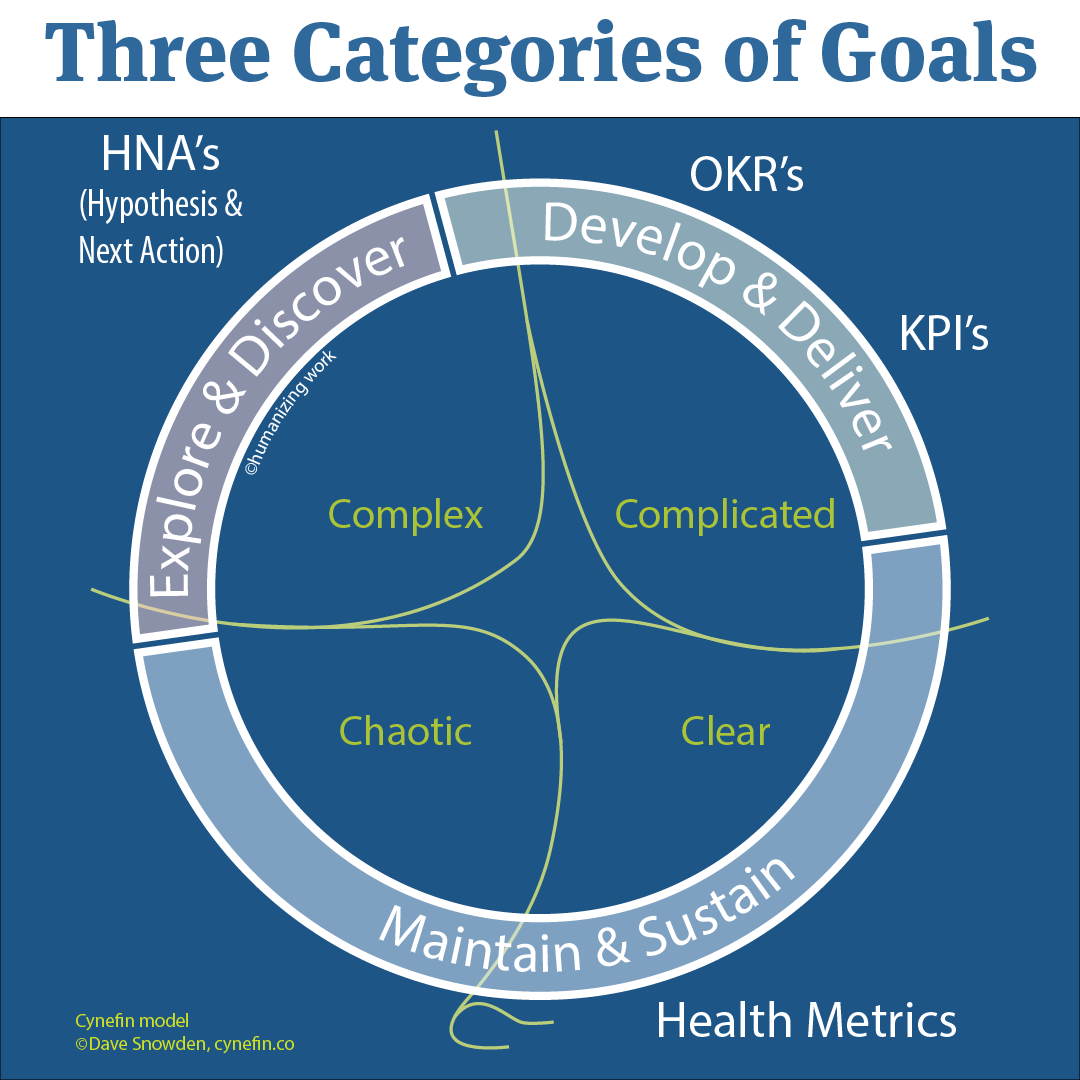Setting goals can make or break your team’s success. In this article, we explain three distinct types of team goals—OKRs, Health Metrics, and Exploratory Goals—and illustrate how they align with the domain of your work using the Cynefin framework. Discover how to effectively set and achieve goals that drive development, maintain stability, and foster innovation in your team.
There is strong evidence that setting effective team goals leads to better outcomes and higher engagement.* But done poorly, they can have the opposite effect.
For personal goal setting, we’ve created a method to fine tune goals that lead to improvement without burnout. You can learn that approach here.
For team goals, one of the biggest mistakes we see is using the same format, like OKRs, for every team goal. This ignores how the nature of the work lends itself to different approaches. In fact, there are three broad categories of goals, each appropriate for a specific range of complexity. OKRs fit in only one of the three categories, so using them gives you at best a one in three chance of them working well, and that’s if you’re forming them well! Want to increase those odds?
There are three broad categories of goals. We’ll visualize these over the Cynefin model from Dave Snowden. If you’re unfamiliar with Cynefin, here’s a quick overview.

Sometimes, goals are related to Maintaining and Sustaining systems that are already in place. This type of work includes things in the Clear domain, where everything is predictable. Perhaps surprisingly, it applies to teams working in the Chaotic domain, where our goals are related to quickly recovering from unpredictable issues. Maintain and Sustain goals are usually related to efficiency and scale over time. Format these goals as health metrics–specific targets based on previous baselines.
The next category of goals are related to Developing and Delivering solutions, be that products, services, features, etc. Here we’re largely in the Complicated domain, where we know enough to analyze, plan, and forecast to some degree of accuracy. OKRs and KPIs are good tools to consider here.
Finally, some goals are related to Exploration and Discovery. These are goals from the Complex domain, including intentional dips into the Chaotic for the purpose of generating innovations. OKRs have always been an awkward fit here, and most teams that set OKRs in this domain find them becoming irrelevant long before the quarter is through. Instead, use what we call Hypotheses and Next Actions. HNAs are relatively self-explanatory: what’s your hypothesis, and what is the next thing you can do to learn about that hypothesis? Sometimes this is more research oriented, others it’s more experiment driven. Research here is not about analyzing to predict an outcome. That’s a Complicated domain strategy. Here, the research serves to form a clearer hypothesis that can then be tested.
The next time you need to set a team goal, give yourself a much better chance for a good result by starting with the right category, then applying one of the goal types native to that category.
If your team would like to get better at setting effective goals, consider bringing in a skilled facilitator to help you create more clarity and alignment. Contact us for more information.
*See Locke & Latham, Widmeyer & Ducharme, Latham et al., Heslin et al.
Last updated